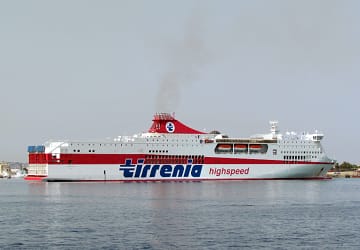
-
Recent Searches
Recent Searches
- Travel Alerts
- My Account
- Customer Service
-
United Kingdom
Arbatax to Civitavecchia Ferry
The Arbatax Civitavecchia ferry route connects Sardinia with Rome. Currently there is just the 1 ferry company operating this ferry service, Tirrenia. The crossing operates up to 2 times each week with sailing durations from around 10 hours 31 minutes.
Arbatax Civitavecchia sailing durations and frequency may vary from season to season so we’d advise doing a live check to get the most up to date information.
Arbatax to Civitavecchia Ferry Alternatives
-

-
Get price
-
-

-
Get price
-
-

-
Get price
-
-

-
Get price
-
-

-
Get price
-
-

-
Get price
-
-

-
Get price
-
-

-
Get price
-
-

-
Get price
-
-

-
Get price
-
-

-
Get price
-
-

-
Get price
-
-

-
Get price
-
-

-
Get price
-
-

-
Get price
-
Average Arbatax Civitavecchia Prices
Prices shown represent the average one way price paid by our customers. The most common booking on the Arbatax Civitavecchia route is a car and 2 passengers.
Arbatax Guide
The small harbour of Arbatax is located in Sardinia in Italy. The town's centre is located at the bottom of Cape Bellavista which is an area rich in Mediterranean scrub and known for its red rocks and the porphyritic granite found near to the harbour. Surrounding the town are the highest mountains on the island which provide a breathtaking backdrop to the town. A popular attraction in the town is a 17th century tower adjacent to the harbour. Whilst out to see visitors are able to observe the silhouette of the famous porphyritic reef known as "red rocks' from Arbatax. Also popular with visitors is the S. Gemiliano Tower which is located on a point in the southern part of the headland around 3 km from the town.
Arbatax ferry port connects to the Italian mainland via the ferry ports of Civitavecchia, Genoa, Fiumicino, Olbia and Cagliari.
Civitavecchia Guide
The Italian city of Civitavecchia lies on the Tyrrhenian Sea coast in the Lazio region of the country. The city, which is home to just under 60,000 residents, is home to a cruise and ferry port and is located around 80 km to the north west of Rome. The city can trace its port's history back over one thousand years to 101-108 AD, when the Emperor Trajan ordered the port of Centumcellae to be built in order to accommodate deepwater shipping for the Roman capital. After this period, they fell under the rule of a number of different Counts and Popes.
In the city visitors will find examples of restored medieval and Baroque structures which includes the large Forte Michelangelo which is a fortress that was commissioned by pope Giulio II in the early 16th century and the 17th century defensive walls behind the port. The wall forms one side of the Lungoporto Gramsci which is an elevated pedestrian walkway. From here there are excellent views to be had of the cruise ships and ferry basins in the port.
Car and passenger ferries link Civitavecchia to Sardinia, Sicily, and other destinations within Italy and abroad.

